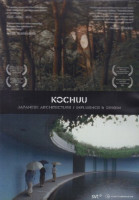Kochuu Filming Locations
Kochuu Filming Locations
Finland is a Northern European nation bordering Sweden, Norway and Russia. Its capital, Helsinki, occupies a peninsula and surrounding islands in the Baltic Sea. Helsinki is home to the 18th-century sea fortress Suomenlinna, the fashionable Design District and diverse museums. The Northern Lights can be seen from the country's Arctic Lapland province, a vast wilderness with national parks and ski resorts.
Norway is a Scandinavian country encompassing mountains, glaciers and deep coastal fjords. Oslo, the capital, is a city of green spaces and museums. Preserved 9th-century Viking ships are displayed at Oslo’s Viking Ship Museum. Bergen, with colorful wooden houses, is the starting point for cruises to the dramatic Sognefjord. Norway is also known for fishing, hiking and skiing, notably at Lillehammer’s Olympic resort.
Sweden is a Scandinavian nation with thousands of coastal islands and inland lakes, along with vast boreal forests and glaciated mountains. Its principal cities, eastern capital Stockholm and southwestern Gothenburg and Malmö, are all coastal. Stockholm is built on 14 islands. It has more than 50 bridges, as well as the medieval old town, Gamla Stan, royal palaces and museums such as open-air Skansen.
Kochuu (2003)
KOCHUU is a visually stunning film about modern Japanese architecture, its roots in the Japanese tradition, and its impact on the Nordic building tradition. Winding its way through visions of the future and traditional concepts, nature and concrete, gardens and high-tech spaces, the film explains how contemporary Japanese architects strive to unite the ways of modern man with the old philosophies in astounding constructions. KOCHUU, which translates as "in the jar," refers to the Japanese tradition of constructing small, enclosed physical spaces, which create the impression of a separate universe. The film illustrates key components of traditional Japanese architecture, such as reducing the distinction between outdoors and indoors, disrupting the symmetrical, building with wooden posts and beams rather than with walls, modular construction techniques, and its symbiotic relationship with water, light and nature. The film illustrates these concepts through remarkable views of the Imperial Katsura Palace, the Todai-Ji Temple, the Naoshima Contemporary Art Museum, the Sony Tower, numerous teahouses and gardens (see link below for complete list), as well as examples of the cross-fertilization evidenced in buildings throughout Scandinavia, and shows how 'invisible' Japanese traditions are evident even in modern, high-tech buildings. KOCHUU also features interviews with some of Japan's leading architects as well as Scandinavian contemporaries including Pritzker Prize winners Tadao Ando and Sverre Fehn, Toyo Ito, Kazuo Shinohara, Kristian Gullichsen and Juhani Pallasmaa (see link below for complete list and bios). KOCHUU is a compelling illustration of how the aesthetics of Japanese architecture and design are expressed through simple means, and also shows that the best Japanese architecture, wherever it appears, expresses spiritual qualities that enrich human life.
